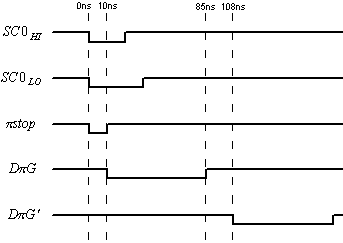





3.3.6 Data acquisition software
The data acquisition software used by the pibeta changed in 1997 from HIX
(Heterogeneous Information Exchange) to MIDAS (Maximum Integrated Data
Acquisition System). Both of these packages were written by Stefan Ritt, a
collaborator in the pion beta decay experiment. The MIDAS system is based,
primarily, on Intel x86 class CPUs communicating via Ethernet-TCP/IP. MIDAS has
been successfully used in several experiments at PSI and TRIUMF. The MIDAS
system has been designed with multiple layers to allow for easy compilation on
most any platform. The system has a Remote Procedure Call system and database
structures designed specifically for the pibeta experiment optimizing on speed.
During the 1997 beam time, the setup consisted of three PCs running the Windows
NT operating system. Two of these were "frontends" while the third was the
"backend".
One of the most useful features of the MIDAS system is the incorporation of
its own analyzer software. The analyzer allows users to define their own
software "modules" to manipulate or create new data banks. The analyzer program
can be run online or offline making it particularly simple to reproduce results
identical to those seen online. It also

Figure 3.17: Trigger timing for several signals created and used in the
electronic trigger logic.
allows easy implementation of offline successes online during the next beam
time. Another very useful feature of the analyzer was its ability to keep the
last 10,000 events in a global section of memory while being run online. This
memory was accessible by the CERN software package PAW (Physics Analysis
Workstation) making many aspects of the data observable online. The backend
computer was stationed upstairs in the counting house.
This computer was responsible for reading events from the FASTBUS crate and
sending them over the network to the backend computer. This computer was
stationed in the electronics racks just outside of the p E1 area and ran in
"DOS" mode, eliminating any overhead in maintaining a graphical environment.
This computer was responsible for : (1) communicating with the two LRS 1440 HV
power supplies, (2) communicating changes in the trigger configuration to the
appropriate CAMAC modules, (3) monitoring temperatures from probes in and
around the detector apparatus, and (4) monitoring the gas flow of the MWPCs.
The slow controls computer was also stationed in the electronics racks just
outside of the p E1 area.
This computer was a 133Mhz Pentium and was the most powerful of the three MIDAS
computers. The backend computer was responsible for:
* Holding the online database in shared memory
* Writing data to hard disk and two DLT tape drives
* Running the analyzer program to allow online analysis of data as it came
in.
A total rate of >75 events per second was achieved for pion decay data.



















